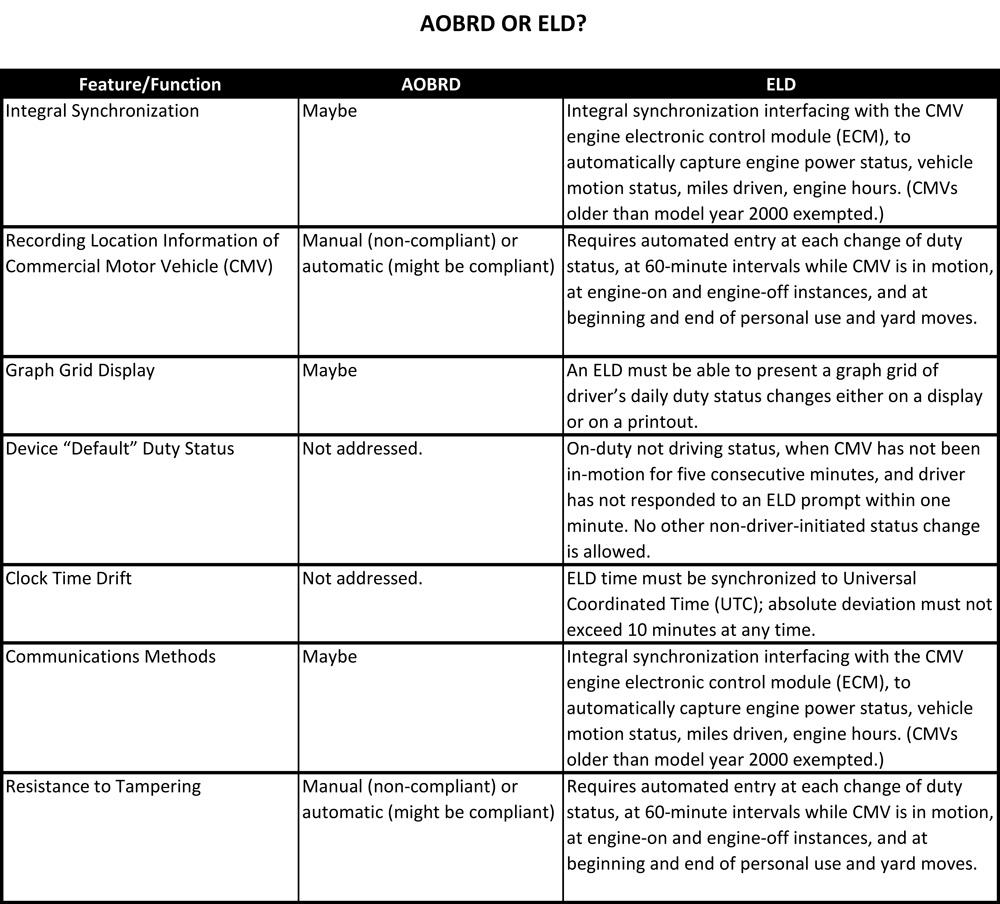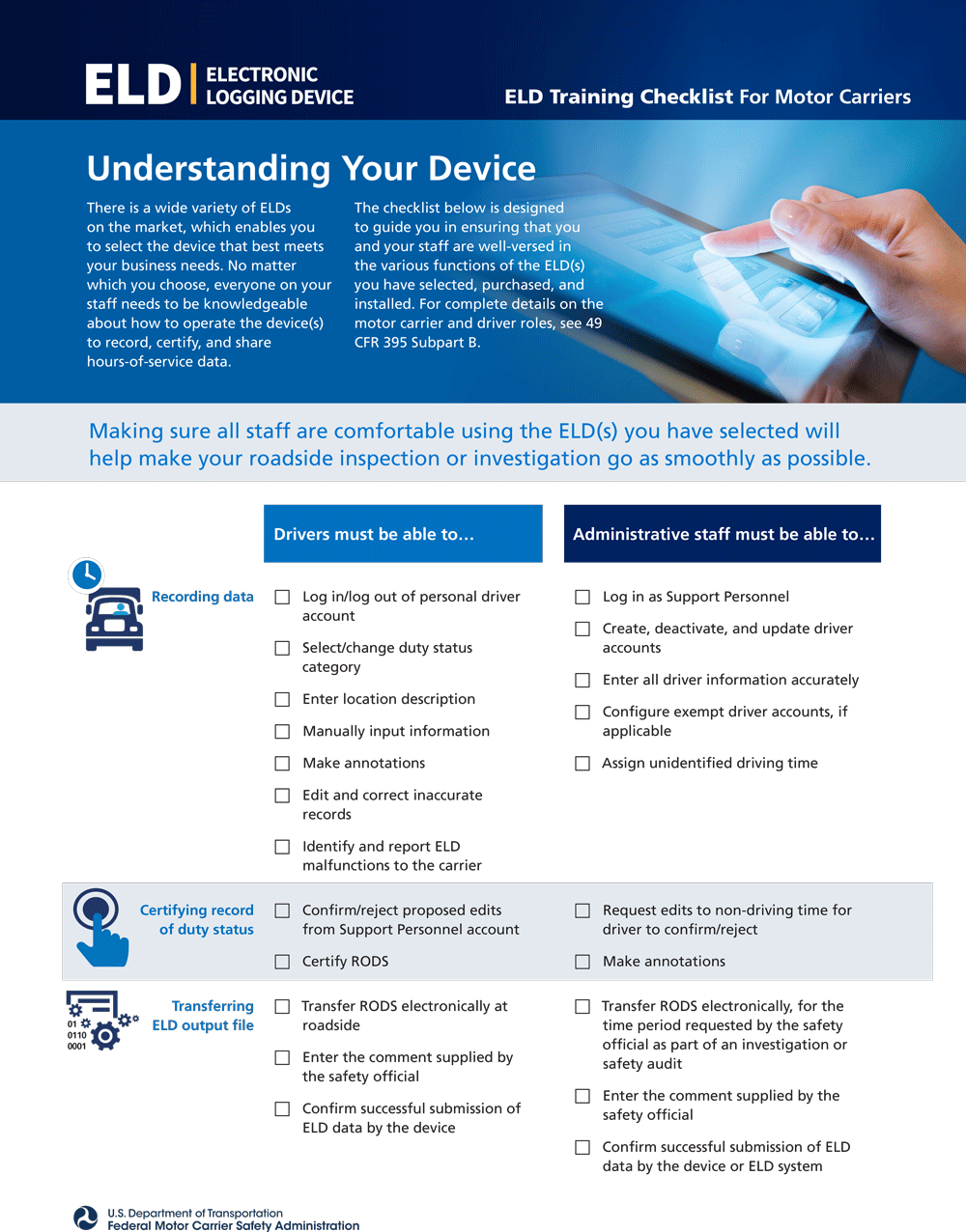Law enforcement continues to express concern that the December 17, 2019 Electronic Logging Device (ELD) deadline is looming, and they are still seeing many of their roadside contacts with CMV’s result in driver confusion about the difference between AOBRD’s and ELD’s. In most cases, the driver thinks they are already compliant, but they do not realize they are using an AOBRD that will place them out-of-service if utilized after 12/17/19.
In an effort to prepare our industry for the December 17th deadline, we are offering a reminder for MMTA members to identify their device’s compliance with the ELD requirements and encourage other drivers/carriers to do the same, especially small carriers and owner-operators.
The following is an excerpt from the FMCSA website:
What is the difference between an ELD and an AOBRD?
While AOBRDs also synchronize with the CMV engine to record data, the main difference is that AOBRDs cannot support the electronic data transfer methods outlined in the ELD rule—telematics (web services and email) and local transfer (Bluetooth and USB). The ELD rule compares the technical specifications of AOBRDs and ELDs.
So how do you know if your device is compliant? Check the version of your software to make sure you are running the ELD version and not the AOBR version. You can also go to FMCSA’s website to access resources and a list of approved equipment. However, the best way to know if you are running a compliant device is to contact your vendor and ask them to verify.
Not having a compliant ELD once required could result in serious implications for motor carriers. Enforcement will place those who are in non-compliance out of service for 10 hours, before allowing the driver continue to their destination. At that point they will be placed out of service until a compliant ELD is utilized. The violation is also a 10-point severity to the SMS for the motor carrier.
Enforcement is also advising that other common roadside violations include failure to meet one or more of the Part 395.22 roadside requirements:
(g) Portable ELDs. If a driver uses a portable ELD, the motor carrier shall ensure that the ELD is mounted in a fixed position during the operation of the commercial motor vehicle and visible to the driver when the driver is seated in the normal driving position.
(h) In-vehicle information. A motor carrier must ensure that its drivers possess onboard a commercial motor vehicle an ELD information packet containing the following items:
(1) A user’s manual for the driver describing how to operate the ELD;
(2) An instruction sheet for the driver describing the data transfer mechanisms supported by the ELD and step-by-step instructions for the driver to produce and transfer the driver’s hours-of-service records to an authorized safety official;
(3) An instruction sheet for the driver describing ELD malfunction reporting requirements and recordkeeping procedures during ELD malfunctions; and
(4) A supply of blank driver’s records of duty status graph-grids sufficient to record the driver’s duty status and other related information for a minimum of 8 days.
In addition to the resources attached with this article, FMCSA also has a helpful FAQ section on ELD’s that may be found here: https://www.fmcsa.dot.gov/hours-service/elds/faqs
As with any of your compliance questions or concerns, feel free to call Tim or Randy at MMTA, 623-4128.


